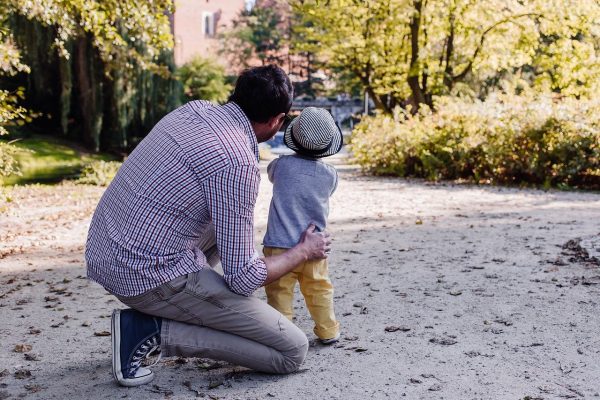We can’t solve health inequities in a vacuum. To truly eliminate health disparities, it’s crucial to involve patients and the community and co-design solutions with them.
In the second part of our leadership series on health equity, we featured leaders from the National Health Foundation, PFCCpartners, Vision y Compromiso, and Cook County Health and Hospitals System, who have partnered with community members and patients to tackle inequities linked to race, ethnicity, poverty, and class. Discussing their journey and challenges, these leaders shared crucial steps that care teams should take to succeed.
Below you’ll find a recording of the webinar, key takeaways, bios of the featured experts, and further readings. We look forward to your thoughts and questions.
WHO SHOULD VIEW THIS WEBINAR?
People in community, leadership or patient-facing roles who want to eliminate inequities in health and health care.
Jump to…
0:00 – Opening Remarks and Faculty Introduction | Juliane Tomlin, Senior Manager, CCI
3:58 – Setting the Stage | Mary Minniti [Panel Moderator]
8:03 – Panel Interviews and Discussion | Libby Hoy, Kelly Bruno, Maria Lemus, and Leticia Reyes-Nash
56:40 – Closing Remarks and Next Steps | Juliane Tomlin
6 Key Takeaways
What is patient engagement? Moderator Mary Minniti of the Institute for Patient- and Family-Centered Care opened with a working definition: “An active partnership among patients, families, caregivers, health care staff, and the community to improve health care.”
This can occur on different levels: At the point of care, Minitti noted, people working in clinics can engage patients through motivational interviewing, health coaching, or shared decision-making. From the patient perspective, it might include a log of his or her daily blood pressure readings and bringing that to checkups. “The organizational level is equally important,” she said, adding that’s where clinics and health systems can create structure that really drive patient feedback, such as family surveys, town hall meetings, and patient advisory councils. Finally, clinicians can invite patients and community members to get involved in policy, including helping create new and more inclusive legislation by participating on policy-setting committees.
Here are some of the key takeaways from the panel, including why something like really listening — or leasing a parking lot — can be mean the difference between success and failure.
1. Listen with humility and keep your word.
Kelly Bruno, president and CEO of the National Health Foundation, says outreach never stops, but health care employees need to “communicate humbly” — and this means respectful listening. When the NHF began working with the community on plans for a Pico-Union Recuperative Care facility, she says, “The first thing we did was listen. And that’s it. You have to listen. You can’t be like, ‘yeah, but… yeah, but.’ You listen. You listen and you’re there, and you have to be comfortable in that space and not want to fix everything. Listen to what is being said, and after that, you need to ask, ‘what can we do? What do you need from us’? And then you need to actually do what you say you’re going to do.”
As an example, she talks about the community group’s worries about the new recuperative care facility, including their questions about the homeless population and safety. But other concerns came up that the NHF hadn’t even considered, such as parking. “Parking was a huge issue for them, because we were going to take all their parking places,” she said. “If they had to park further from their homes, it wasn’t going to be safe for them.” The NHF then decided to lease the parking lot next door, so all its employees could park at that lot as opposed to the street — an action that solved the problem and engendered mutual trust. “Now we were neighbors,” she said. “It may not seem like a big deal, but it was. It communicated to our comunity that we understood what they wanted. It sounds so simple, but it’s really important: Ask, and then do what you say you’re going to do.”
2. Seek the patient’s perspective so you can solve the right problem.
Libby Hoy is the president and founder of Patient & Family Centered Care Partners (PFCCpartners). She recalls being on a call with a patient family advisor and a facilitator in which the patient said she had been trying to schedule an appointment for ages but could never get a call back. “And the facilitator got very frustrated, very much in that ‘fix it’ mode, and said, ‘You know, we called you this morning — You didn’t pick up!’ And the advisor said, ‘I don’t have any missed calls from the health center center on my phone.’ And the facilitator said, ‘Well, it wouldn’t come from the health center because all our staff is working remotely.'” Hoy explained that quite naturally, the patient hadn’t answered the phone because she didn’t recognize the number. “That’s the value of really understanding a problem from the community perspective, because we don’t want to put resources toward solving the wrong problem,” she concluded.
3. Create multiple doors for patient and community involvement.
Discussing barriers to involvement, Hoy says that in 2020 her group realized it was not living out its fundamental values of inclusion and diversity. “We were always very embracing of anybody who came to our door, but we didn’t do enough to create multiple doors for people in underserved communities,” Hoy said. “That’s who is typically underrepresented in policy and design rooms, and we’ve worked toward really expanding those efforts.” PFCCpartners, for example, expanded its community voice through surveys, focus groups, partnerships, quality improvement (QI) community reps, and promatoras (culturally sensitive Spanish-speaking community health workers), and the addition of community members to quality improvement (QI) projects. In addition, it diversified its advisory board with help from a new diversity, equity and inclusion group from the organization’s patient and family advisor network.
4. Tap community gatekeepers for introductions rather than making cold calls.
Maria Lemus of Vision Y Compromiso grew up in a segregated community outside San Bernadino, California, where her grandmother was a local healer and her mother the “heart of service” volunteer who brought resources into their Latino community. Much immigrant community wisdom and strength has been lost, she says, through the process of “Americanization” for its own sake. “Every community — Latino, Jewish, African, Iranian, Punjabi — has one person who is the heart of service in that community,” she said, adding that health care centers need to find out who those people are. To create a bond and establish trust with immigrant patients, she advises against cold calls. Instead, she recommends finding a promatora or person well-respected in the community and asking for a warm handoff. View the resources that Maria shared from Vision Y Compromiso:
-
- The Promotor Model: A Model for Community Transformation (Download PDFs: Summary | Full Report)
- Key Workforce Priorities for the Community Transformation Model (Download PDFs: Summary | Full Report]
5. Engage the community in all levels of decision-making.
Leticia Reyes-Nash of the Cook County Health & Hospitals System of Chicago said that in the course of developing programs, her team had discovered a significant blind spot. “We have to go beyond the four walls of the clinic,” she said. “We can’t just simply put people on steering committees and expect that that’s going to be sufficient to have community voice. We need to engage the community at all levels of decision-making.” During the COVID-19 crisis, for example, Cook County Health was active in distributing food, prescriptions, and other urgently needed supplies. But when the team did focus groups with the communities hardest hit by the pandemic — not just major stakeholders — its members were astonished.
“There was a lot of creativity happening in the community that we would never even thought of around” addressing those needs and more, Reyes-Nash said. “And some of those partners were not partners that we would naturally be inclined to engage. So through that process, we were able to write a Request for Applications that was more open and inclusive. Not only did it fortify the kind of the needs we anticipated, but we made room for other needs to be identified.”
6. Don’t rely on community health workers alone to help you achieve equity.
Community health workers and promotoras are invaluable, but they’re not enough, says Lemus. As you scale up, “you’re never going to be able to afford enough community health workers.” said Lemus. “There are just too many of us. I’m overwhelmed by the number of Latinos around the United States, and I’m a Latina. We’re just growing and growing and you’re never going to be able to afford it. What we believe in is that the expertise and the resources are in the community. So we need to build up their capacity.”
Changing the lens
Other members on the panel agreed that the resources and expertise to create equity is in the community.To help tap that strength, the National Health Foundation has created an employee-led JEDI council, whose acronym stands for Justice, Equality, Diversity, and Inclusion. “Beyond wanting a Star Wars reference, we wanted to ensure that internal processes and practices are created through a JEDI lens,” Bruno said.
And part of that lens is cnanging roles. As Hoy of PFCCpartners concluded, “It’s not for us to create a table and invite voices to the table. It’s not our job. Our role is to bring the wood, the hammer and the nails and the labor and ask, how do we help you build the table? And what do we need to discuss there? That’s our role.”
Faculty
Panel moderator:
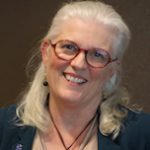
Mary Minniti
— Senior Policy and Program Specialist, Institute for Patient- and Family-Centered Care (IPFCC)
Mary Minniti is a certified health care quality professional and peer-reviewed author with more than 25 years of experience supporting health care clinicians and staff as they improve the quality and outcomes of care.
panelists:
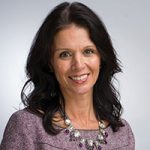
Kelly Bruno
— President & CEO, National Health Foundation (NHF)
Kelly Bruno is president and chief executive officer of NHF, a nonprofit organization that works within under-resourced communities to identify and advance solutions that remove barriers and promote health for all.

Libby Hoy
— Founder & CEO, Patient & Family Centered Care Partners (PFCCpartners)
As the mother of three sons living with mitochondrial disease, Libby Hoy founded PFCCpartners in 2010 to create a community of patients, families, providers and health care organizations committed to the shared learning of Patient & Family Centered Care practice.
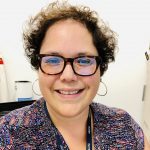
Leticia Reyes-Nash
— Director of Programmatic Services and Innovation, Cook County Health (CCH)
Leticia Reyes-Nash works across the system to expand programs and services for those served by CCH through innovative partnerships with public and private partners with a focus on health equity and justice.
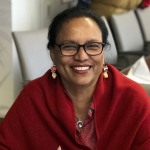
Maria Lemus
— Executive Director, Vision y Compromiso
Maria Lemus has been the founding Executive Director of Vision Y Compromiso organization since 2000.
read further: Full Faculty Bios
Additional READINGS / RESOURCES:
- What’s the benefit of patient, family engagement?
by Margo Williams, MHA, CMPE
—Four reasons can encourage physicians to put more effort into increasing partnership with patients and families, which in turn improves communication, transparency, and accountability. - Tackling Bias, Fear, Inequality, and Disrespect: Tosan Boyo’s Blueprint for a Successful Equity Journey in Healthcare (Diana Hembree, Center for Care Innovations | Fri, September 11, 2020)
- Racial Inequities in Health Care: What is Holding Us Back?
Dr. Ronald Copeland’s remarks from last month’s CCI webinar / health equity leadership panel on August 19, 2020 -
Disparities in Health and Health Care: Five Key Questions and Answers (.pdf)
by Samantha Artiga, Kendal Orgera, and Olivia Pham (March 2020); Henry J. Kaiser Family Foundation (KFF) - The Economic Case for Health Equity (.pdf)
Association of State and Territorial Health Officials (ASTHO) - An invaluable talk by Dayna Bowen Matthew, author of Just Medicine: A Cure for Racial Inequality in American Health Care, who discusses implicit bias, the impact it has on health, and strategies to reduce health disparities.
Find this useful or interesting? We’re constantly sharing stuff like this. Sign up to receive our newsletter to stay in the loop.

